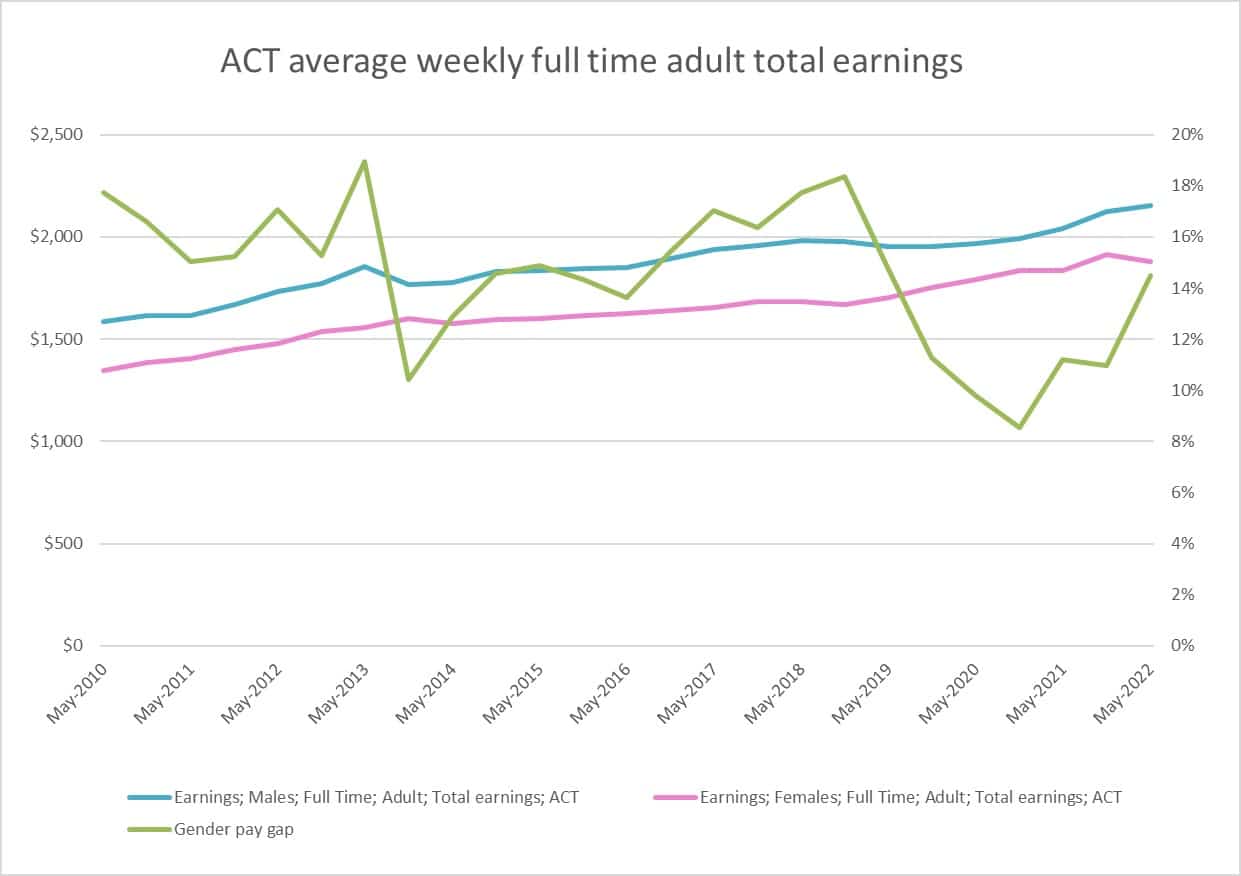The widening gender pay gap during COVID calls for a stronger focus on the gender impact of ACT Government decisions, particularly budget priorities, Jo Clay MLA, ACT Greens spokesperson for Women, argues.
The ABS’ latest data on the gender pay gap, released on Tuesday, shows that the gender pay gap in the ACT was trending down and got to its lowest gap at 8.6 per cent in November 2020 during COVID – but is widening again, and is back to pre-COVID levels, at 14.5 per cent.
“We are moving in the wrong direction,” Ms Clay said.
Ms Clay asked Yvette Berry, ACT Minister for Women, about gender lens budgeting in Tuesday’s ACT Budget Estimates: Has the ACT made any measurable difference for women with our gender lens budgeting? Is the ACT measuring progress, such as by decreasing the gender pay gap?
“I was told there is no tangible way to measure this,” Ms Clay said. “There is a measurable way. The ABS measures it, and we are going in the wrong direction.”

Ms Clay said she will continue to advocate for a gender lens to our budget decisions and to measure how these efforts affect women, “so we can know if it is working”.
“The ACT Greens have been calling for an effective measurement of gender outcomes through the budget process for years. A gender lens on all of our policy, program and budget decisions will make sure we are spending our time and money in the right way so that our choices support women. This is particularly important during COVID and our COVID recovery as Government money, ACT and Federal, is used to stimulate the economy and we need to do this fairly.”
At Budget Estimates, Ms Berry articulated the ACT Government’s ongoing commitment to improving gender equity and highlighted the government’s work in progressing gender responsive budgeting, a government spokesperson said.
She acknowledged that changes to gender equality and gender responsive budgeting require a long-term approach, and the government’s work in this area will develop.
The ACT Wellbeing Framework measures progress against 12 domains including economy and living standards, and considers the wellbeing of different groups of Canberrans, including women.
In addition, the ACT Government and other jurisdictions are developing a Nationally Consistent Reporting Framework to measure progress on women’s economic security.
While the ACT Gender Pay Gap is consistently one of the lowest in Australia, there is more work to be done, Ms Berry said. The current Gender Pay Gap in the ACT is 7.9 per cent compared to the 13.8 per cent Gender Pay Gap in the Australian labour force.
The ACT Government has several initiatives to encourage women’s participation and leadership in the workforce including.
- ACT Women’s Return to Work Grant Program: $1,000 individual grant is targeted at supporting ACT women looking to re-enter the workplace who face additional barriers to employment and training opportunities. The Program also includes workshops to provide women with the skills they need to get back to work, including resume writing, applying for jobs, job interview techniques, and presentation for the workplace.
- The Audrey Fagan Communication and Leadership Program helps ACT women develop leadership skills, in particular public speaking.
- The Audrey Fagan Board Traineeship Program helps ACT women develop the relevant skills and expertise for taking on decision making and leadership roles. The program includes workshops and connecting participants to a board and mentor.
- The ACT Diversity Register connects women and people with diverse experiences with board and committee vacancies. It also provides opportunities and resources to help prepare for a board or leadership role, and opportunities to participate in training and networking.
The ACT Government will further progress this work through the Third Action plan under the ACT Women’s Plan 2016-26, which will be released next year.



